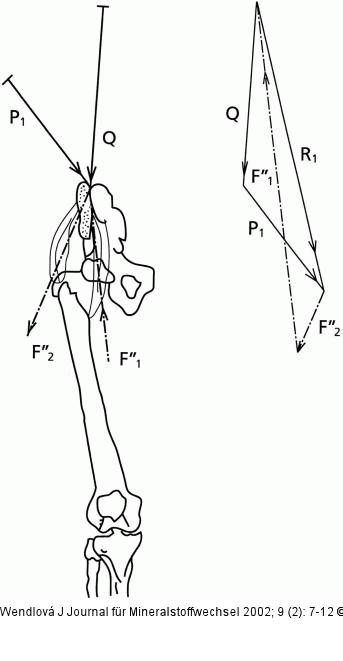Wendlová J Muscular Dysbalance in Mm. Coxae Area and its Clinical Significance for Patients with Osteoporosis Journal für Mineralstoffwechsel & Muskuloskelettale Erkrankungen 2002; 9 (2): 7-12 Volltext (PDF) Summary Übersicht
| ||||||||||
Abbildung 4: Hüftmuskulatur Simulation of the influence of life load (blow, impact, fall) on resultant force in muscular dysbalance. P1 = the force vector of life load (blow, impact, fall). R = the resultant force of a vector of Q force and P1 force. F1'' = the force vector transfered into flexors. F2'' = the force vector transfered into extensors. |

Abbildung 4: Hüftmuskulatur
Simulation of the influence of life load (blow, impact, fall) on resultant force in muscular dysbalance. P1 = the force vector of life load (blow, impact, fall). R = the resultant force of a vector of Q force and P1 force. F1'' = the force vector transfered into flexors. F2'' = the force vector transfered into extensors. |





